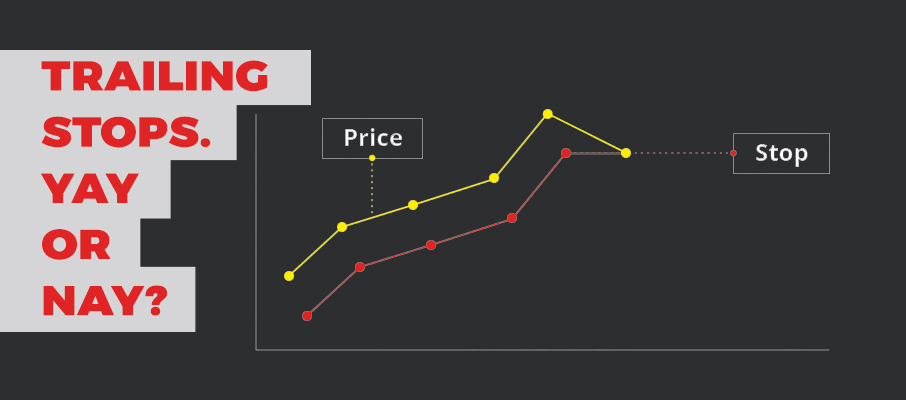Trailing Stops. Yay, or Nay?

A hefty chunk of today’s forex trading is automated, not just HFT, but retail trading too. An example of an automated approach to say, risk management, is a trailing stop.
There’s a perception that automated trading refers strictly to trading robots, but it can often refer to a component of a trading system – in this instance, a trailing stop.
Now, some people prefer to place a take profit at say, 2R, or a previous S&R level. But, in a trending market, sometimes the market just keeps on giving and giving, moving in your desired direction. Using a trailing stop is a way of not only protecting your capital, but allowing your trade to catch most of a strong trend.
With this particular method, the trading platform or an attached program execute the closing of your trade based on a set criteria.
Put simply, a trailing stop can help you better manage a position.
Due to the nature of the forex market being volatile, sometimes the market whips around causing your stops to be hit before it resumes going in the direction you intended. This is another reason why trailing stops can be beneficial – they allow you to filter out the noise of the market and remove emotions from your trading.
One of the major benefits of using a trailing stop, as a mentioned, is catching a chunky portion of a market trend. No emotions influence you or your decisions. All you need to do is let the stop trail automatically or even manually.
Conversely, trailing stops aren’t always necessarily helpful. In the absence of a trend, the market is ranging. Trailing stops do very little in this case, or even hinder your PnL. Instead of catching the measured move, or #R move, you’ll get whipped out by your trailing stop for a portion of your initial target area (if you set one).
All in all, the benefits to a trader’s emotional state far outweigh the possibility of being whipped out early. You’ll be allowed to focus on the next setup without constantly worrying about your open trades, because they’re managed for you, buy the use of a trailing stop.








